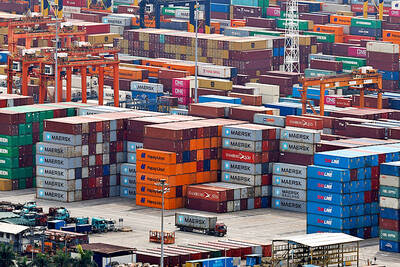As a population of enthusiastic meat eaters, Kashmiris have felt the effects of India’s lockdown due to the COVID-19 pandemic at every meal.
Kashmir’s meat supply, most of which comes from outside the Indian-administered region, has dropped sharply since the lockdown to stem the spread of the novel coronavirus started on March 24.
Imports have stalled and many meat sellers in the Himalayan region have closed, said Abdul Rashid, who usually eats mutton at least four days a week, but has not had any in the past month.
To fill the empty space on their plates, millions of Kashmiris are turning to vegetables, which local farmers have been supplying in growing abundance over the past 15 years, after adopting new seeds and climate-smart growing methods.
“Our choices are very limited these days,” said Rashid, who lives in a suburb of the regional summer capital, Srinagar, as he stopped to buy vegetables from a seller at a local market.
“As vegetables are mostly produced locally, we get them fresh, and we know where they have come from,” he said.
Since the start of the lockdown, Kashmiris have been consuming large quantities of haakh — a local variant of collard greens — as well as spinach, potatoes and onions, the Kashmir Vegetable Dealers Association said.
The boost in vegetable production is the result of changes including growing use of greenhouses and rainwater-harvesting systems, University of Kashmir Department of Botany curator Akhtar Malik said.
The amount of land being used to grow vegetables in Kashmir has more than quadrupled since 1981 to 48,000 hectares, Kashmiri Department of Agriculture Director Altaf Andrabi said.
“Our vegetable production is touching new heights annually. The number of vegetable growers has grown in thousands over recent years,” he said, adding that more than 100,000 people are employed in the industry if transport and sales jobs are included.
About 70 percent of Kashmir’s 7 million people are directly or indirectly engaged in agriculture and related sectors, official data showed.
Kashmir’s farmers produce about 1,500 tonnes of vegetables per year, Andrabi said, which in the peak summer season not only meets local demand, but also allows exports to other parts of India, where growing crops such as tomatoes, okra and peas is difficult.
That demand for exports is significantly rising with meat in short supply due to the coronavirus shutdown, he told Thomson Reuters Foundation by telephone from his office in Srinagar.
“Kashmir valley has the unique distinction of ... being able to make vegetables available to the rest of the country at a time when the whole country is in need of [more] vegetables,” Andrabi said.
The region’s vegetable production ramped up in the early 2000s, when farmers began using high-yielding seed varieties and protecting seedlings in polyethylene plastic-covered greenhouses, said Mushtaq Chitu, a retired professor at Sher-e-Kashmir University of Agricultural Sciences and Technology.
Greenhouses were a “game changer,” Chitu said, allowing farmers to grow all year round, even through the winter, and protect seedlings that once would have been washed away in the rainy season.
Many farmers switched from rice farming to vegetables after discovering that they could make five times as much money, he said.
While farmers in many parts of India have to wrestle with recurring drought, Kashmir’s success in ramping up vegetable production has been built in part on improving water storage, environmental expert Shakil Romshoo said.
Installing irrigation systems is difficult in the mountainous and forested region, but farmers are using tube wells and ponds — and some have installed water storage tanks, said Romshoo, who heads the Department of Earth Sciences at the University of Kashmir.
However, more still needs to be done, he said.
“The government has said that it wants to increase farmers’ income, [but] such goals can’t be achieved if farmers have no easy access to water,” Romshoo said.
Andrabi said that the government has helped many farmers without access to irrigation build water-harvesting tanks, and has dug wells and built irrigation canals where possible.
Reyaz Bhat, a farmer just outside of Srinagar, said that he built his two water-harvesting tanks, because it was faster than waiting for goernment help.
The tanks provide enough water to irrigate his 2,000m2 vegetable farm, he said.
Bhat, who swapped from growing corn to vegetables nearly a decade ago, now makes about 400,000 rupees (US$5,296) per year selling his collard greens, tomatoes, cabbage and other produce.
“What I used to earn from maize is not even comparable to the returns I get from growing vegetables. The vegetables fetch me enough money to live a comfortable life,” he told the Thomson Reuters Foundation.
With Kashmir’s lockdown extended until at least May 17, vegetable farmers have said that they are reaping the benefits of their bigger role at the family table.
Before the lockdown, “I used to throw out some vegetables the next day, as I would not find buyers for all my stock,” vegetable seller Mohammed Yousuf said.
These days, when he takes his produce to the market in Srinagar, it sells out in less than three hours, he said.
“I am seeing people buying vegetables like never before,” he said. “This coronavirus has made Kashmiri people forget about mutton.”

The Eurovision Song Contest has seen a surge in punter interest at the bookmakers, becoming a major betting event, experts said ahead of last night’s giant glamfest in Basel. “Eurovision has quietly become one of the biggest betting events of the year,” said Tomi Huttunen, senior manager of the Online Computer Finland (OCS) betting and casino platform. Betting sites have long been used to gauge which way voters might be leaning ahead of the world’s biggest televised live music event. However, bookmakers highlight a huge increase in engagement in recent years — and this year in particular. “We’ve already passed 2023’s total activity and

Nvidia Corp CEO Jensen Huang (黃仁勳) today announced that his company has selected "Beitou Shilin" in Taipei for its new Taiwan office, called Nvidia Constellation, putting an end to months of speculation. Industry sources have said that the tech giant has been eyeing the Beitou Shilin Science Park as the site of its new overseas headquarters, and speculated that the new headquarters would be built on two plots of land designated as "T17" and "T18," which span 3.89 hectares in the park. "I think it's time for us to reveal one of the largest products we've ever built," Huang said near the

China yesterday announced anti-dumping duties as high as 74.9 percent on imports of polyoxymethylene (POM) copolymers, a type of engineering plastic, from Taiwan, the US, the EU and Japan. The Chinese Ministry of Commerce’s findings conclude a probe launched in May last year, shortly after the US sharply increased tariffs on Chinese electric vehicles, computer chips and other imports. POM copolymers can partially replace metals such as copper and zinc, and have various applications, including in auto parts, electronics and medical equipment, the Chinese ministry has said. In January, it said initial investigations had determined that dumping was taking place, and implemented preliminary

Intel Corp yesterday reinforced its determination to strengthen its partnerships with Taiwan’s ecosystem partners including original-electronic-manufacturing (OEM) companies such as Hon Hai Precision Industry Co (鴻海精密) and chipmaker United Microelectronics Corp (UMC, 聯電). “Tonight marks a new beginning. We renew our new partnership with Taiwan ecosystem,” Intel new chief executive officer Tan Lip-bu (陳立武) said at a dinner with representatives from the company’s local partners, celebrating the 40th anniversary of the US chip giant’s presence in Taiwan. Tan took the reins at Intel six weeks ago aiming to reform the chipmaker and revive its past glory. This is the first time Tan